Tasbi
Most haptic research for augmented and virtual reality (AR/VR) focuses on creating complex gloves that render hyper-realistic tactile feedback when interacting with virtual objects. What if instead it were possible to provide believable feedback through a simple wristband?
Tasbi is a prototype AR/VR bracelet that incorporates two haptic modes: vibration in the form of six radially spaced tactors, and uniform squeeze pressure thanks to a novel cord tensioning mechanism. By combining appropriately mapped vibration and squeeze cues with visuals and audio from a head-mounted display (HMD), Tasbi can deliver extremely compelling tactile feedback for hand interactions in AR/VR.
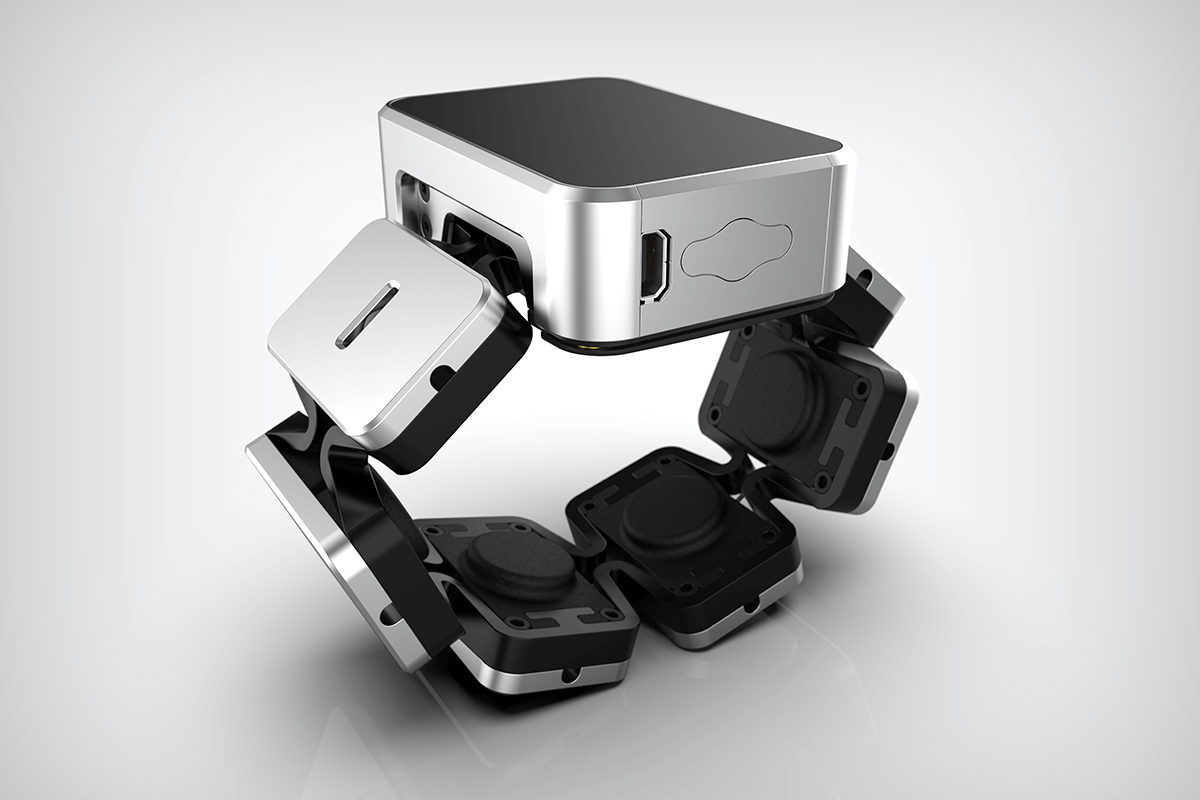
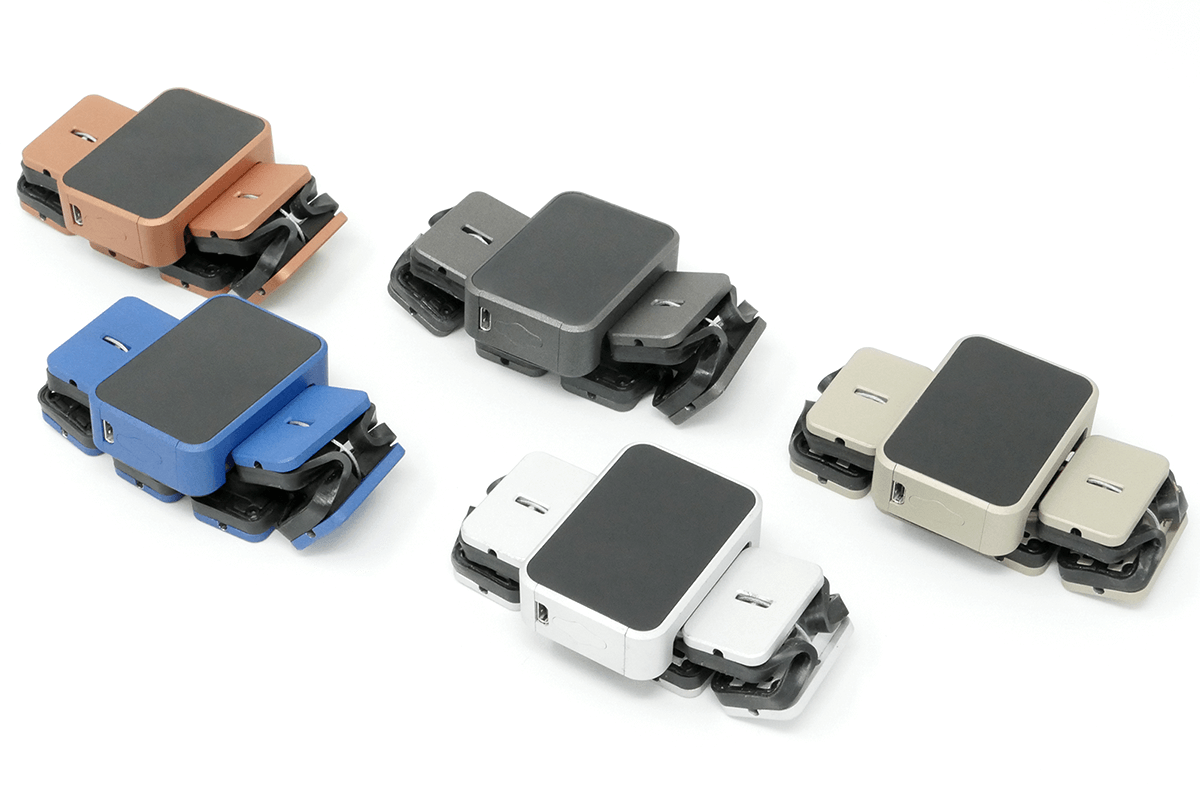
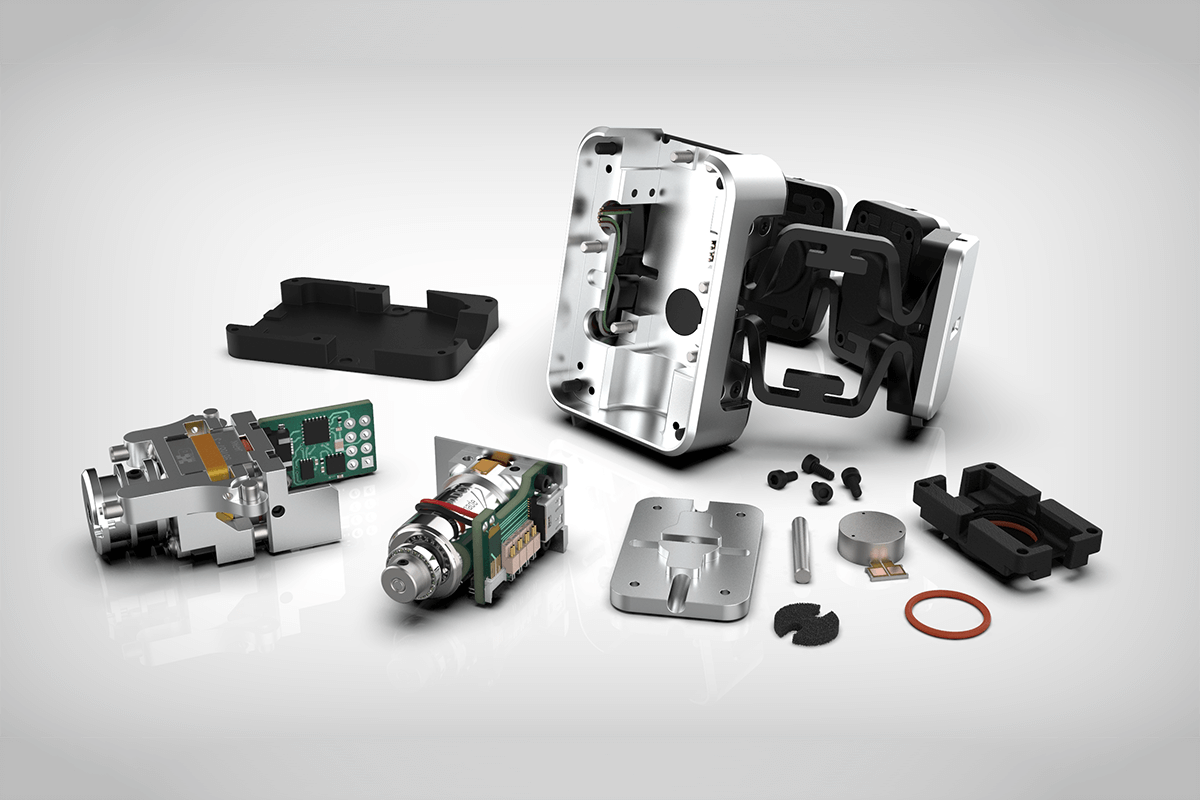
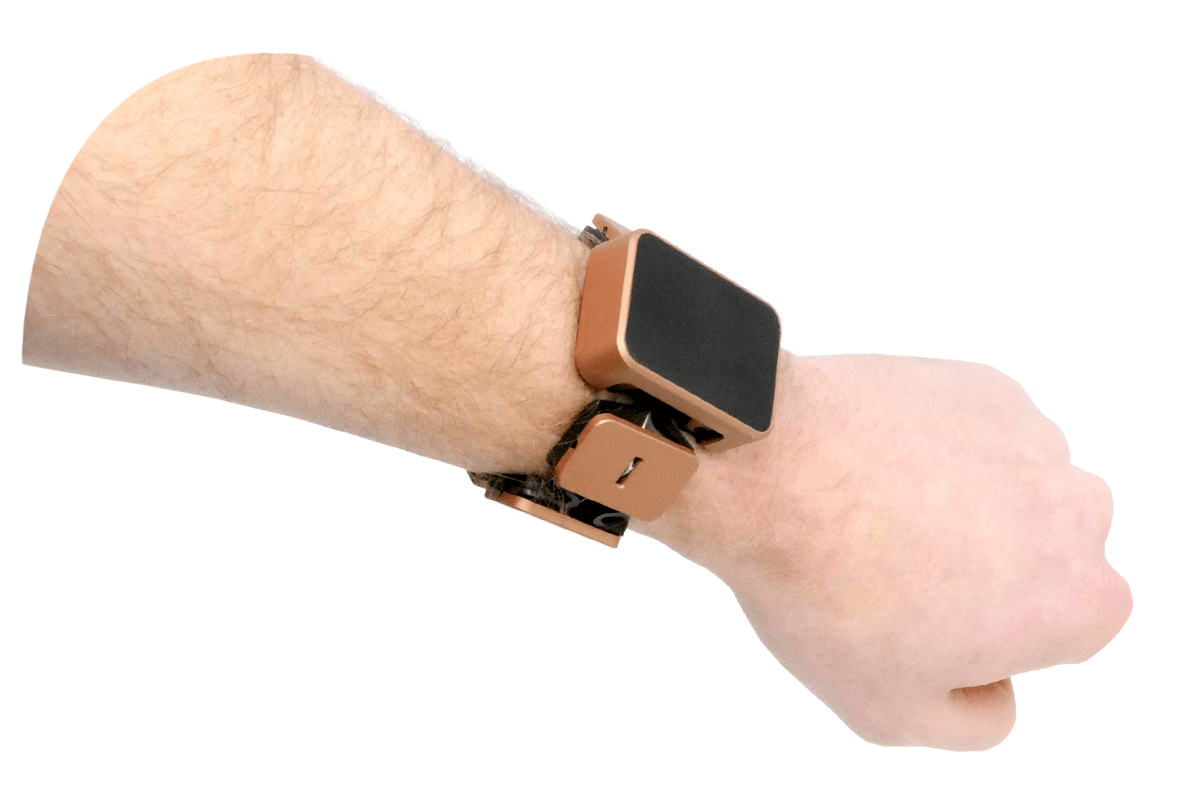


How Tasbi Works
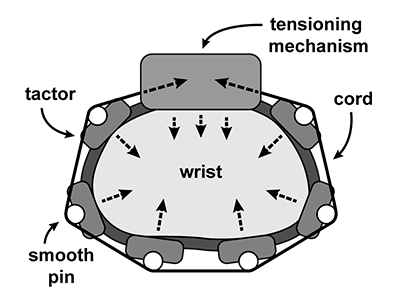 Tasbi packs a lot of haptic technology into a small form factor. The wristband is comprised of six individual vibrotactor (or tactor) assemblies that are held together by two rubber side pieces. The sidings are elastic and have a zig-zag geometry that allows the band to be stretched over the wrist when it is put on. Each tactor assembly holds a linear resonant actuator (LRA), which can be thought of as a mini speaker that produces vibrations instead of sound.
Tasbi packs a lot of haptic technology into a small form factor. The wristband is comprised of six individual vibrotactor (or tactor) assemblies that are held together by two rubber side pieces. The sidings are elastic and have a zig-zag geometry that allows the band to be stretched over the wrist when it is put on. Each tactor assembly holds a linear resonant actuator (LRA), which can be thought of as a mini speaker that produces vibrations instead of sound.
The top housing of Tasbi contains a tensioning system that winds up a flexible cord. This cord slides over smooth, polished pins inside of the previously mentioned tactor assemblies. The result is a direct inward pressure, or squeeze force, around the wrist when the cord is tensioned. We have shown that this mechanism results in almost entirely normal forces, with no tangential forces, allowing Tasbi to produce high force output while remaining quite small. Sensors in the top housing help control the tensioner so that we can regulate the amount of force felt.
Tasbi is an acronym for Tactile And Squeeze Bracelet Interface
Applications
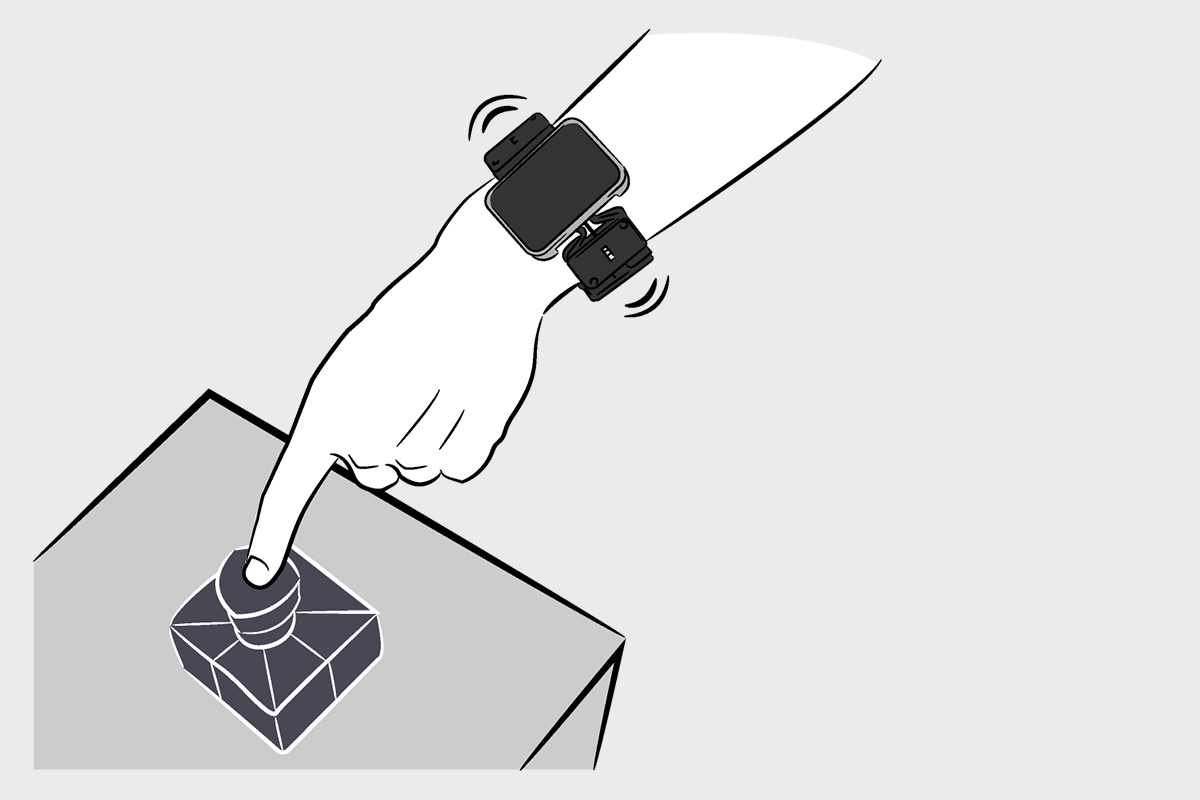
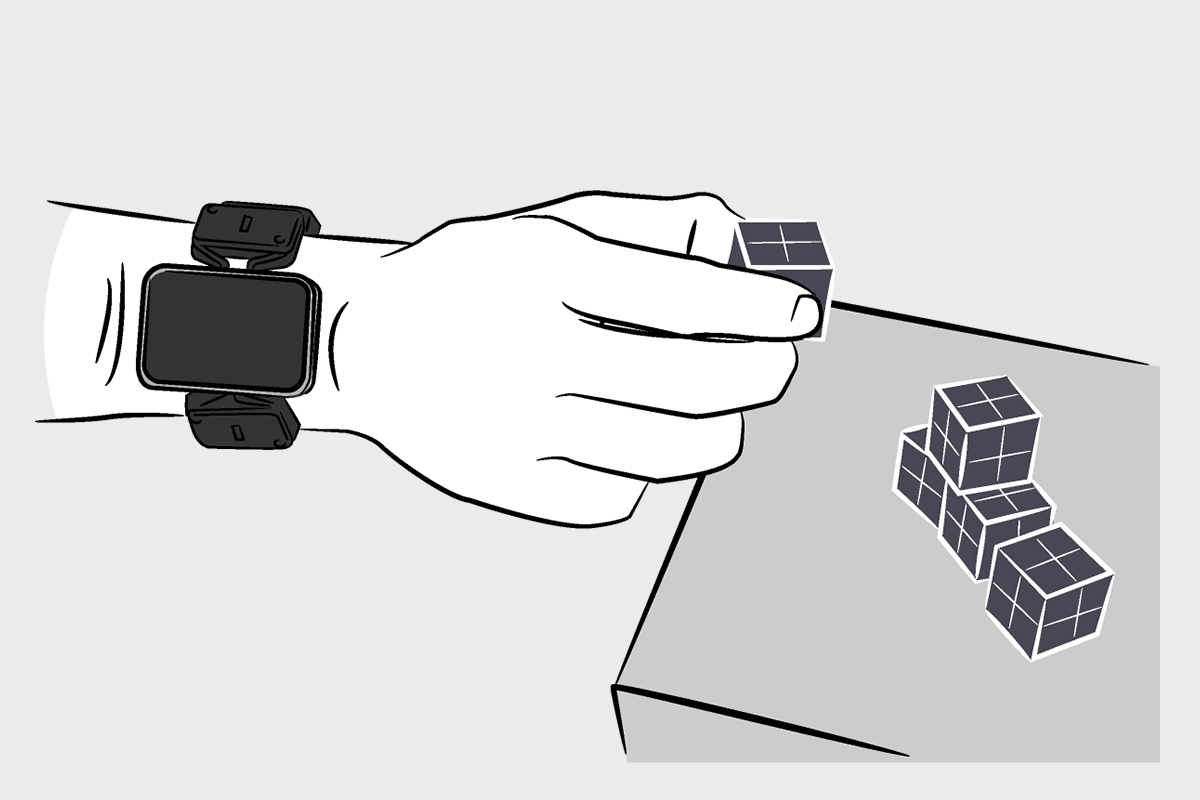
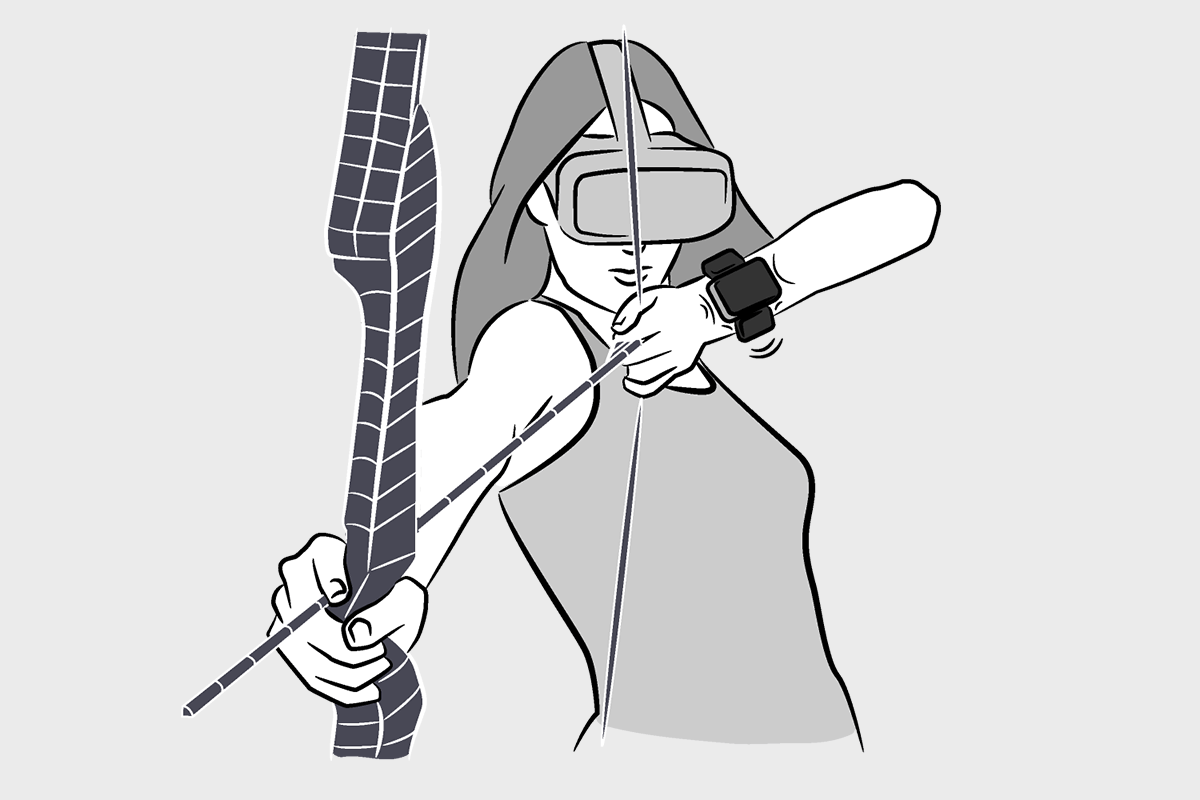
Tasbi has a number of interesting potential uses in AR/VR. My main research interest is in exploring the extent to which haptic feedback delivered at the wrist can substitute for tactile sensations that would otherwise occur at the hands and fingertips.
Consider for instance a virtual button. When the button’s surface is contacted, Tasbi subtly vibrates, and as the button is pressed, Tasbi increases squeeze pressure to mimic a sort of spring force. Obviously this shouldn’t feel like pressing a real button, since all of the feedback is at the wrist and not the fingertip! But the brain is powerful learning machine, and can pretty quickly reconcile this unusual mapping.
Our early explorations with Tasbi seem to indicate that simple wrist-based feedback may be “good enough” to accommodate a wide variety of interactions in AR/VR, ranging from picking up simple objects, to complex two-handed interactions such as shooting a virtual bow.
E. Pezent, A. Israr, M. Samad, S. Robinson, P. Agarwal, H. Benko, and N. Colonnese, “Tasbi: Multisensory Squeeze and Vibrotactile Wrist Haptics for Augmented and Virtual Reality,” IEEE World Haptics Conference, 2019.
E. Pezent, M. K. O’Malley, A. Israr, M. Samad, S. Robinson, P. Agarwal, H. Benko, and N. Colonnese, “Explorations of Wrist Haptic Feedback for AR/VR Interactions with Tasbi”, Extended Abstracts of the CHI Conference on Human Factors in Computing Systems, 2020.
E Pezent, P. Agarwal, J. Hartcher-O’Brien, N. Colonnese and M. K. O’Malley, “Design, Control, and Psychophysics of Tasbi: A Force-Controlled Multimodal Haptic Bracelet,” IEEE Transactions on Robotics, 2022.
